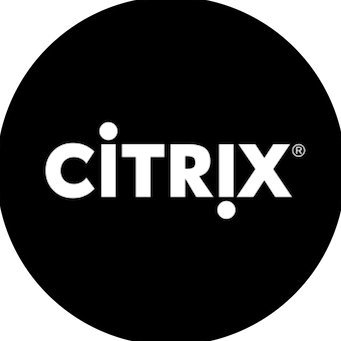The GoToMeeting API provides seamless integration of GoToMeeting provisioning and meeting management into your existing infrastructure or third party applications.
For customers, the ability to add, suspend or delete an organizer in your GoToMeeting Corporate account from within your primary management systems simplifies and streamlines the entire process of account management. The ability to monitor meeting schedules, history and active meeting status allows managers to leverage GoToMeeting activities through your primary applications.
For third parties, the ability to create, update or delete a meeting from within your application makes real-time collaboration possible for your customers. The ability to update meeting schedules, view history and scheduled meetings, and view attendees from past meetings allows you to enhance your users' experience and the value of your applications.
A flexible API for pulling accounting data, normalized and aggregated from 20 accounting integrations. Standardize how you connect to your customers’ accounting software. View, create, update, and delete data in the same way for all the leading accounting platforms. [Read more...](https://docs.codat.io/accounting-api/overview) [See our OpenAPI spec](https://github.com/codatio/oas)
Codat's Assess API enable you to make smarter credit decisions on your small business customers. Assess enriches your customer's accounting, commerce and banking data to surface actionable insights you didn't have before. [Read more...](https://www.codat.io/assess/) [See our OpenAPI spec](https://github.com/codatio/oas)
Bank Feeds API enables your SMB users to set up bank feeds from accounts in your application to supported accounting platforms. A bank feed is a connection between a source bank account—in your application—and a target bank account in a supported accounting package. [Read more...](https://docs.codat.io/bank-feeds-api/overview) [See our OpenAPI spec](https://github.com/codatio/oas)
Codat's Banking API allows you to access standardised data from over bank accounts via third party providers. Standardize how you connect to your customers’ bank accounts. Retrieve bank account and bank transaction data in the same way via our partnerships with Plaid and TrueLayer. [Read more...](https://docs.codat.io/banking-api/overview) [See our OpenAPI spec](https://github.com/codatio/oas)
Codat's Commerce API allows you to access standardised data from over 11 commerce and POS systems. Standardize how you connect to your customers’ payment, PoS, and eCommerce systems. Retrieve orders, payouts, payments, and product data in the same way for all the leading commerce platforms. [Read more...](https://docs.codat.io/commerce-api/overview) [See our OpenAPI spec](https://github.com/codatio/oas)
The API for Sync for Commerce. Sync for Commerce is an API and a set of supporting tools. It has been built to enable e-commerce, point of sale platforms to provide high-quality integrations with numerous accounting platform through standardized API, seamlessly transforming business sale's data into accounting artefacts. [Read More...](https://docs.codat.io/sfc/overview)
The API for Sync for Expenses. Sync for Expenses is an API and a set of supporting tools. It has been built to enable corporate card and expense management platforms to provide high-quality integrations with multiple accounting platforms through a standardized API. [Read more...](https://docs.codat.io/sync-for-expenses/overview) [See our OpenAPI spec](https://github.com/codatio/oas)
The PeerTube API is built on HTTP(S) and is RESTful. You can use your favorite
HTTP/REST library for your programming language to use PeerTube. The spec API is fully compatible with
[openapi-generator](https://github.com/OpenAPITools/openapi-generator/wiki/API-client-generator-HOWTO)
which generates a client SDK in the language of your choice - we generate some client SDKs automatically:
- [Python](https://framagit.org/framasoft/peertube/clients/python)
- [Go](https://framagit.org/framasoft/peertube/clients/go)
- [Kotlin](https://framagit.org/framasoft/peertube/clients/kotlin)
See the [REST API quick start](https://docs.joinpeertube.org/api/rest-getting-started) for a few
examples of using the PeerTube API.
# Authentication
When you sign up for an account on a PeerTube instance, you are given the possibility
to generate sessions on it, and authenticate there using an access token. Only __one
access token can currently be used at a time__.
## Roles
Accounts are given permissions based on their role. There are three roles on
PeerTube: Administrator, Moderator, and User. See the [roles guide](https://docs.joinpeertube.org/admin/managing-users#roles) for a detail of their permissions.
# Errors
The API uses standard HTTP status codes to indicate the success or failure
of the API call, completed by a [RFC7807-compliant](https://tools.ietf.org/html/rfc7807) response body.
```
HTTP 1.1 404 Not Found
Content-Type: application/problem+json; charset=utf-8
{
"detail": "Video not found",
"docs": "https://docs.joinpeertube.org/api/rest-reference.html#operation/getVideo",
"status": 404,
"title": "Not Found",
"type": "about:blank"
}
```
We provide error `type` values for [a growing number of cases](https://github.com/Chocobozzz/PeerTube/blob/develop/shared/models/server/server-error-code.enum.ts),
but it is still optional. Types are used to disambiguate errors that bear the same status code
and are non-obvious:
```
HTTP 1.1 403 Forbidden
Content-Type: application/problem+json; charset=utf-8
{
"detail": "Cannot get this video regarding follow constraints",
"docs": "https://docs.joinpeertube.org/api/rest-reference.html#operation/getVideo",
"status": 403,
"title": "Forbidden",
"type": "https://docs.joinpeertube.org/api/rest-reference.html#section/Errors/does_not_respect_follow_constraints"
}
```
Here a 403 error could otherwise mean that the video is private or blocklisted.
### Validation errors
Each parameter is evaluated on its own against a set of rules before the route validator
proceeds with potential testing involving parameter combinations. Errors coming from validation
errors appear earlier and benefit from a more detailed error description:
```
HTTP 1.1 400 Bad Request
Content-Type: application/problem+json; charset=utf-8
{
"detail": "Incorrect request parameters: id",
"docs": "https://docs.joinpeertube.org/api/rest-reference.html#operation/getVideo",
"instance": "/api/v1/videos/9c9de5e8-0a1e-484a-b099-e80766180",
"invalid-params": {
"id": {
"location": "params",
"msg": "Invalid value",
"param": "id",
"value": "9c9de5e8-0a1e-484a-b099-e80766180"
}
},
"status": 400,
"title": "Bad Request",
"type": "about:blank"
}
```
Where `id` is the name of the field concerned by the error, within the route definition.
`invalid-params.









